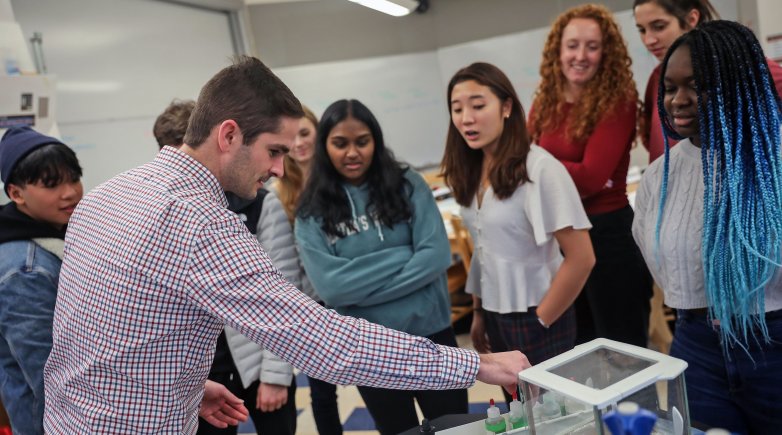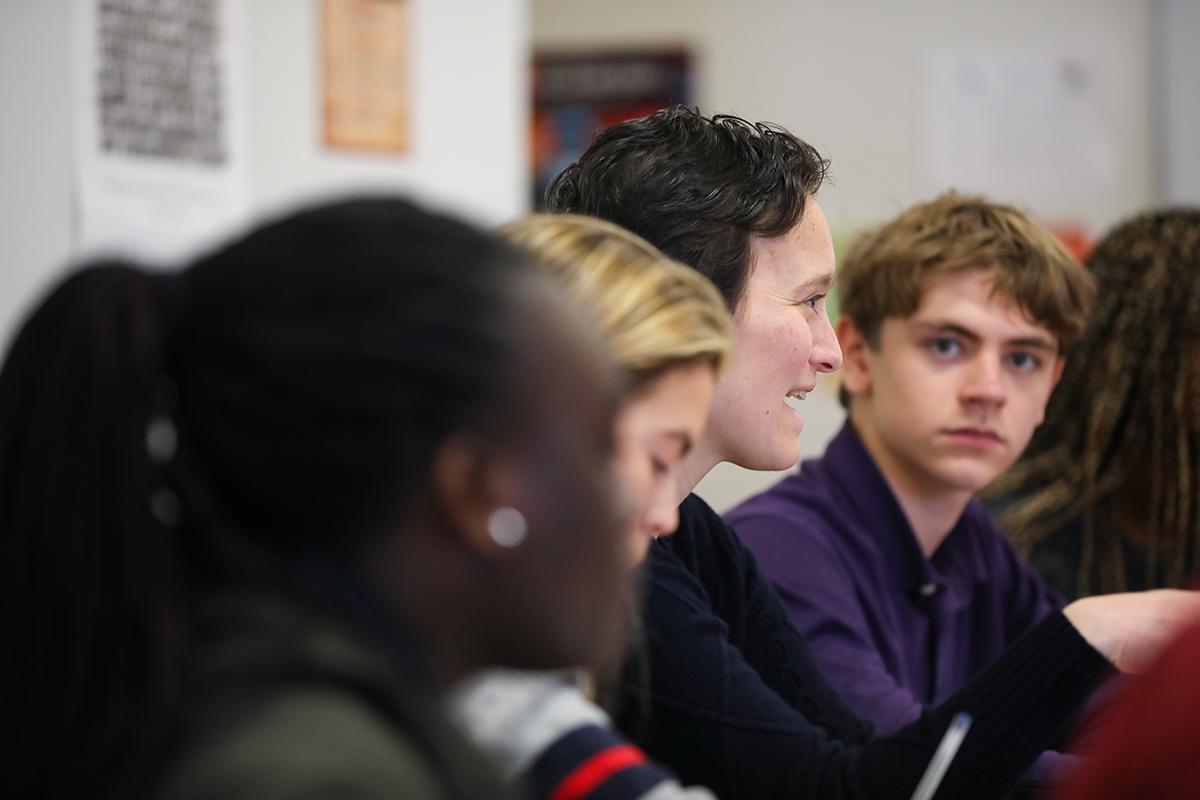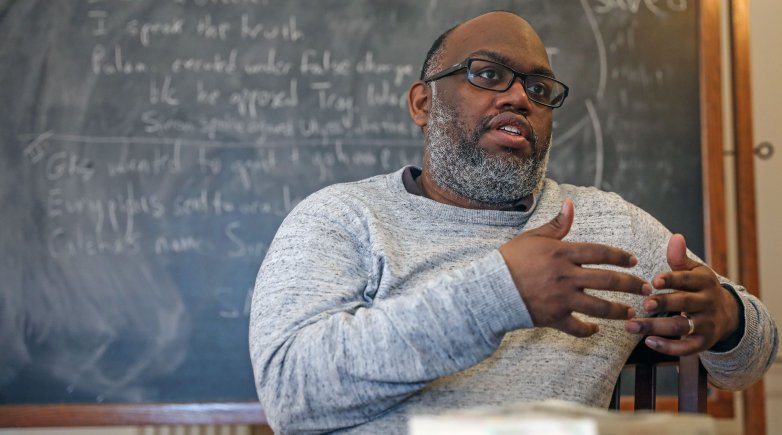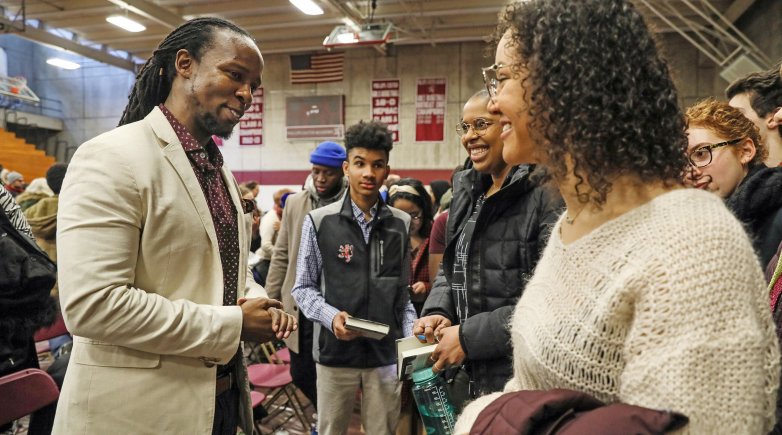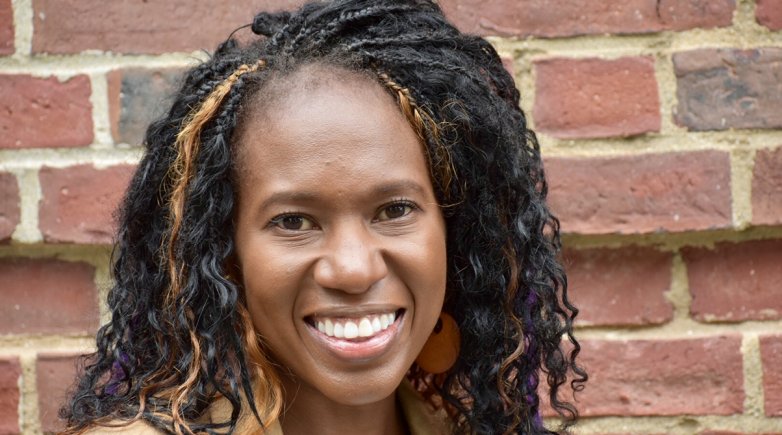Lessons in empathy and identity
Exeter faculty create spaces for students to explore tough topics.
When Principal Bill Rawson’71; P’08 addressed Opening Assembly last September, his message was clear and potent: We are better together.
He told the Exeter community that the Academy’s diversity is its strength and that providing equal opportunity for and fostering a sense of belonging in every Exonian is synonymous with the school’s mission.
“Our commitment to excellence in education and our commitment to diversity, equity and inclusion go hand in hand. One cannot be separated from the other,” Principal Rawson said.
That message has followed the students into their classrooms. Empowered by a vision statement put forth by the Trustees in 2018 to codify these beliefs, Exeter instructors are incorporating them into the curriculum. Science Instructor Andrew McTammany ’04 is transforming his instruction from the theoretical to the tangible by showing chemistry’s real-life impact, for better and worse, on society. A trio of history teachers developed a class for 10th-graders about race and how it came to have significance among humankind over a thousand years. Health and Human Development Department faculty are working directly with Stephanie Bramlett, the school’s director of equity and inclusion, to refine lesson plans that include topics such as cultural competency and implicit bias training. Other departments are taking a closer look at their curriculums, as well, and cross-disciplinary collaborations on topics of equity and social justice are increasing in frequency and scope.
These ideals of inclusion are not new to Exeter. As Principal Rawson reminded listeners during his opening-of-school address, the founders intended for this school to admit “youth from every quarter.” In the last two centuries, the school has evolved to become more inclusive in terms of gender, ethnicity, national and geographic origin, socioeconomic background, race and religion. The progress and the challenges inherent with such work are ongoing.
“The journey is far from complete,” noted Principal Rawson, “but with every step along the way, as we have become a more inclusive community, we have become a stronger school.”
Beyond the elements
In room 218 of the Phelps Science Center, students learn much more than the fundamentals of chemistry. Through hands-on lab work, multidisciplinary readings and far-reaching discussions, Science Instructor Andrew McTammany ’04 cultivates an understanding of the broader impact chemicals have on Earth and its inhabitants. Think of it as the Chemistry of Empathy.
“Even though what [students have] done in this classroom is technically chemistry,” he says, “this has been about making sure that when they leave this classroom, they can see the effects of chemistry on society, on the human experience.”
In many ways, McTammany, who earned his bachelor’s degree from Johns Hopkins University and his master’s degree from Stanford, is redefining what a chemistry class can teach students. His Principles of Chemistry courses, for example, begin with lessons about standard chemical structures, how to convert grams to moles, and the like. Students draw or construct 3D representations of compounds and figure out how intermolecular forces work. But as the term goes on and students master the core science, he moves on to more complex ideas not traditionally posited in high school chem class.
Students progress from benchmark questions like, “Is dichlorodiphenyltrichloroethane, or DDT, soluble in water?” to “Can you calculate the risk ratio of DDT exposure and pancreatic cancer?” They explore why a compound might be developed, what its intended uses are versus its unplanned effects, and which groups of people are most affected by its existence. This type of inquiry pushes students to think about, say, how DDT’s molecular structure resulted in its effectiveness as a pesticide, as well as its long-term effect on human health as a persistent organic pollutant.
Students wrestle with an ethical quandary common in material sciences: A single chemical can be both beneficial and harmful. McTammany explores this idea in a powerful unit about the manufacture and use of the defoliant Agent Orange. Assigned readings culled from scientific journals and nonfiction novels alike offer students multiple perspectives about Agent Orange’s domestic use in agriculture, its military use in Southeast Asia, and its ongoing influence on our culture, history and geography.
“My unit [on Agent Orange] stemmed from a line that [author] Viet Thanh Nguyen wrote in Nothing Ever Dies,” McTammany says. “He wants people, when they look inside the refrigerator, to see that Dow Chemical made the refrigerant and they also made Agent Orange. There are these links that I’m trying to have students be aware of, that’s my goal. ... It’s about creating complexity for them and having them break down societal issues or things that they hear about in the news and getting them to look beyond the Harkness table or beyond the lab and see that it’s everywhere.”
Requiring students to consider the material on an intellectual level and on a personal level is not always easy. “At first it was difficult for them because they’re so used to traditional problem solving in chemistry,” he says. “Getting them to think about effects on individuals, on the narrative histories, was very different. But they definitely got into it.”
By opening up chemistry class discussions to include personal experiences, McTammany allows students to draw on a different set of skills. “It’s another way to create space at the table,” he says. “Sometimes students come in and feel like chemistry is this intimidating experience and they’re not necessarily going to engage because they don’t want to be wrong in front of the teacher, in front of their peers. But no personal experience is ever wrong. It humanizes the subject.”
Beyond that, the Harkness method is particularly well-suited for developing an inquisitive and inclusive mindset. “The students can leave without feeling like there was an answer,” he says. “There was a resolution, but it’s about the process of investigating and using the experience and the ideas and the understanding of others to challenge your own assumptions, to build a frame-work that you can take and use in other contexts.”
